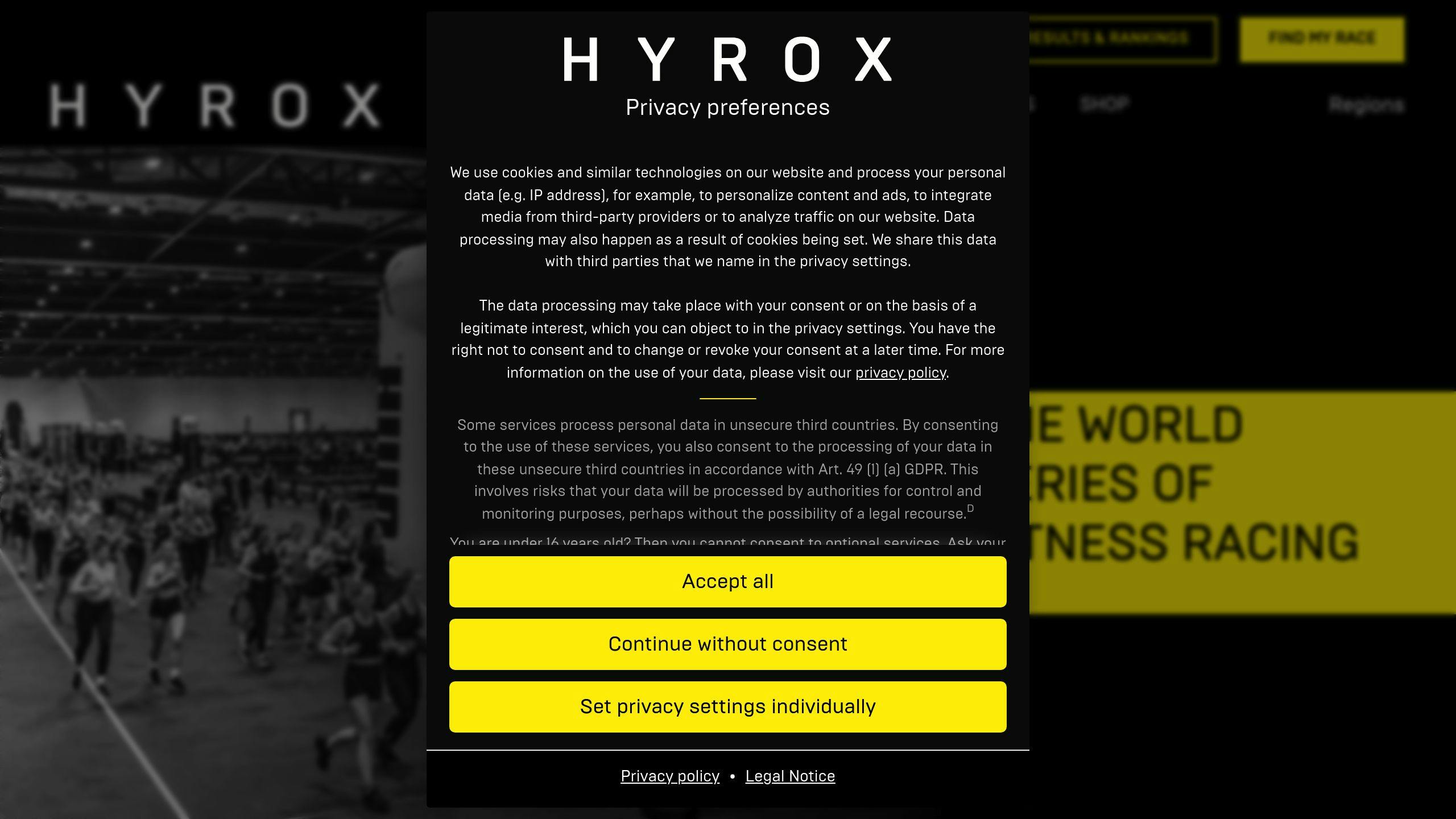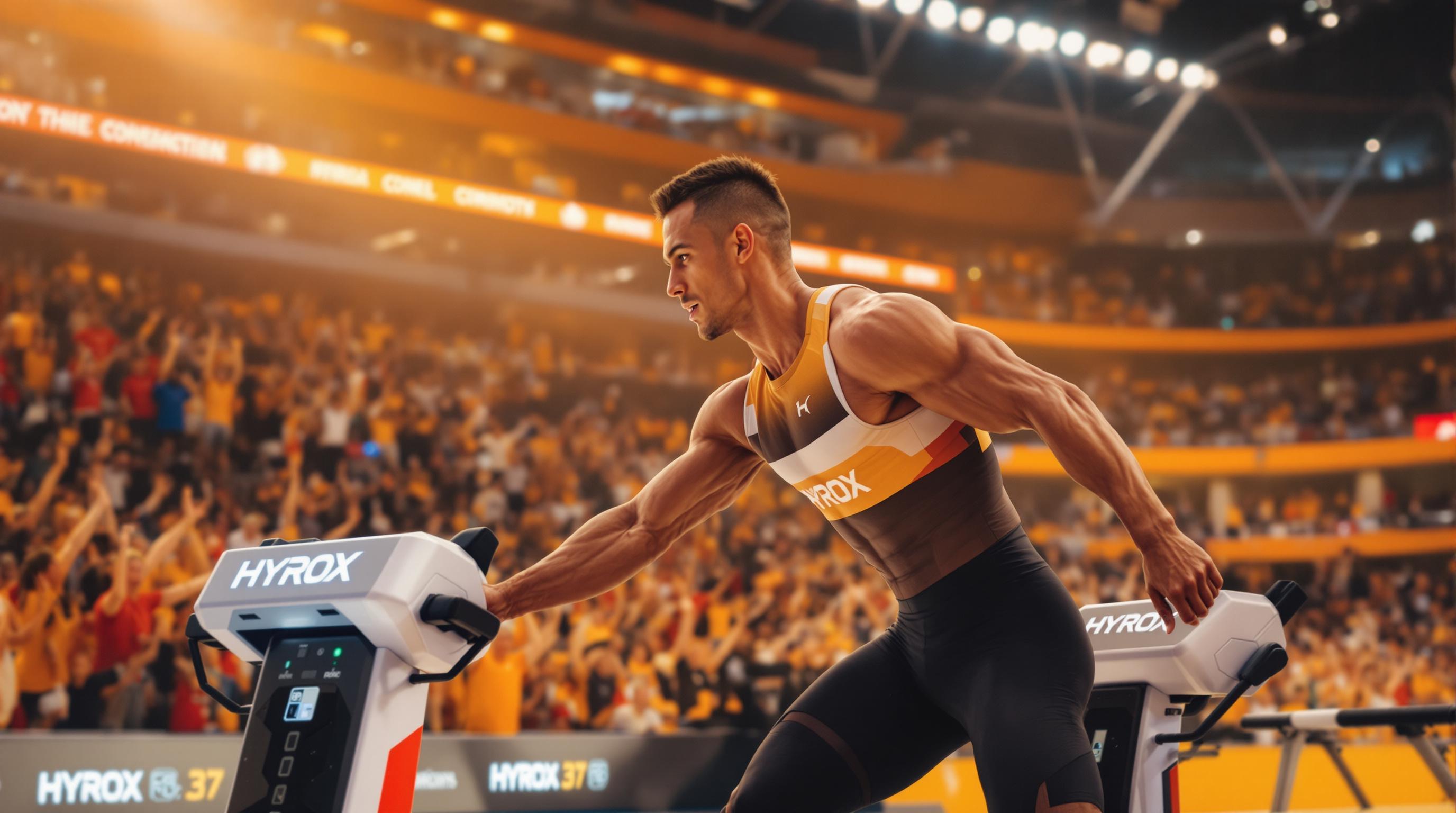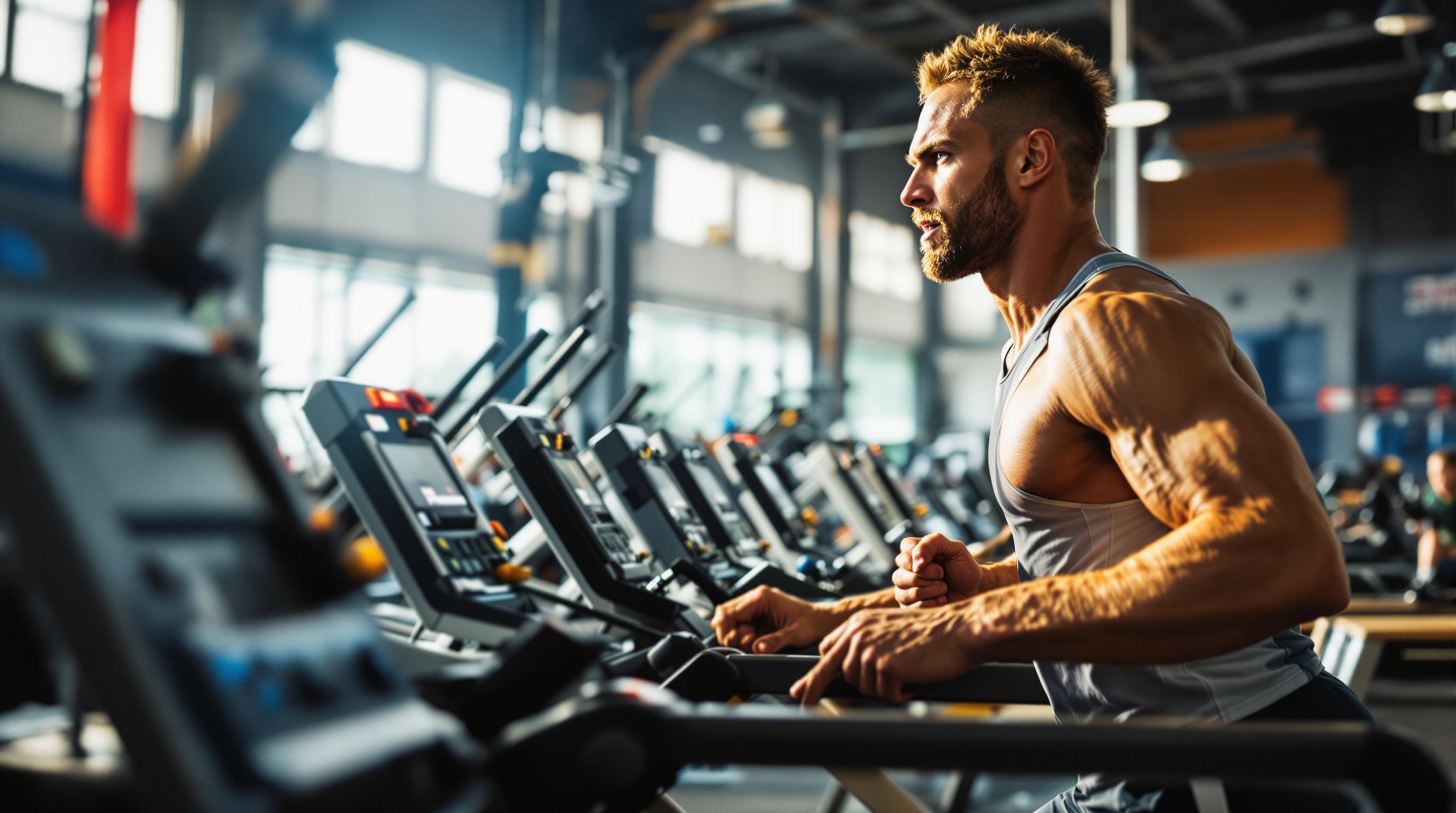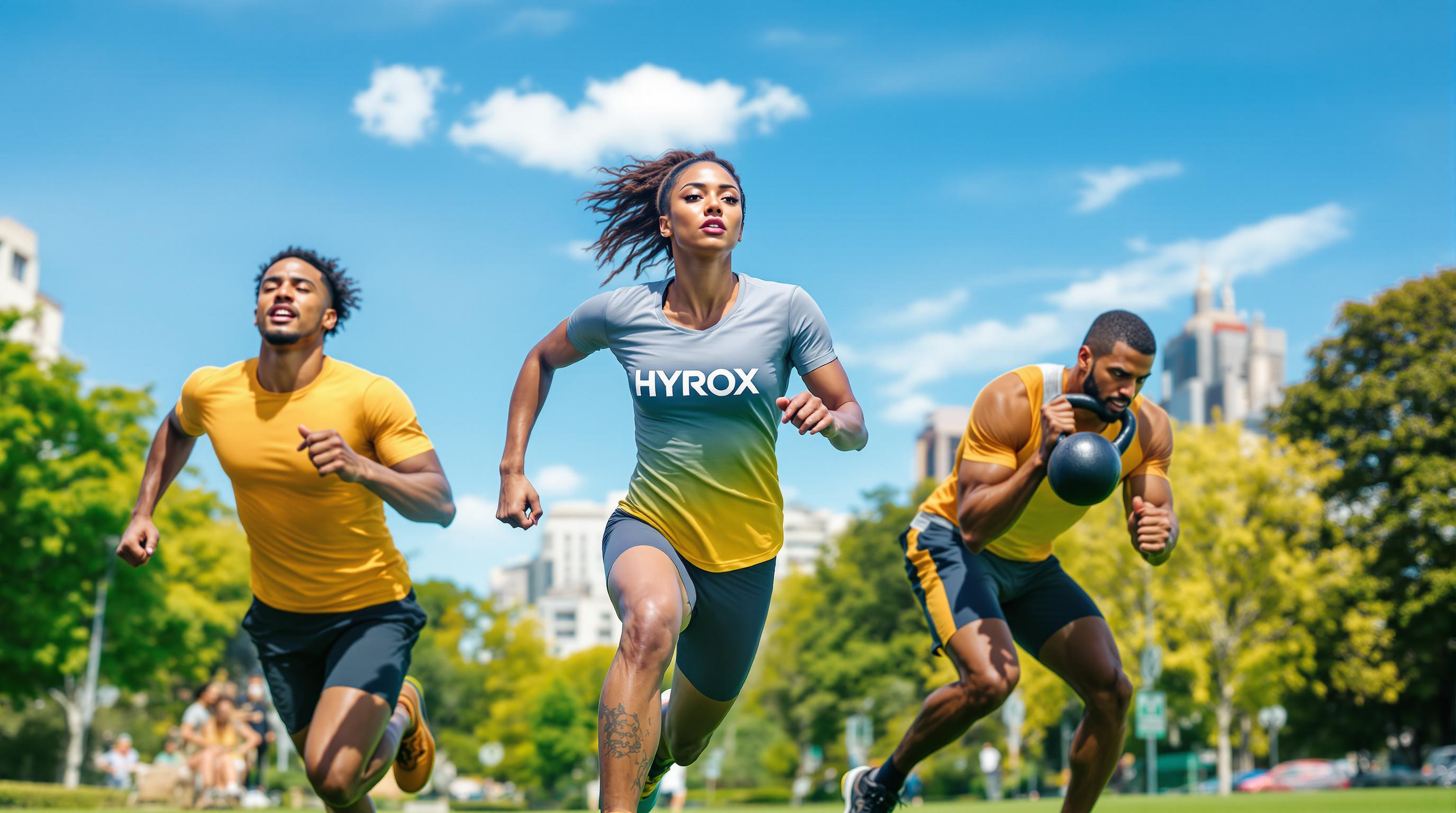Mindfulness can help Hyrox athletes recover faster, reduce stress, and improve performance. By staying present and aware during training, you can lower injury risk, enhance recovery, and even boost competition results.
Key Benefits of Mindfulness for Hyrox Athletes:

- Stress Reduction: Decreases stress by 28%.
- Faster Recovery: Speeds up perceived recovery by 22%.
- Lower Injury Risk: Reduces injury risk by 33%.
- Improved Performance: Enhances focus and form during workouts.
Quick Practices to Try:
- Pre-Workout: Diaphragmatic breathing and visualization to prepare your mind and body.
- During Training: Focus on mindful movement and positive affirmations to stay in the moment.
- Post-Workout: Progressive muscle relaxation and mindful stretching to aid recovery.
Mindfulness isn’t just about relaxation - it’s a tool to sharpen focus, improve body awareness, and build mental toughness. Keep reading to learn how to integrate mindfulness into your Hyrox routine for better results.
Related video from YouTube
Mindfulness Practices Before Hyrox Training
To get the most out of your Hyrox training, incorporating mindfulness techniques can sharpen your focus and prepare your body for the challenges ahead.
Breathing Techniques for Focus
Learning to control your breath is a game-changer for mental preparation. Diaphragmatic breathing, in particular, helps trigger your body's relaxation response.
Here’s how to do it: Inhale deeply through your nose for 4 counts, hold for 4 counts, exhale through your mouth for 4 counts, and hold again for 4 counts. Repeat this cycle for 5-10 minutes before starting your session.
Visualization for Better Performance
Did you know that visualization can boost athletic performance by as much as 14% [1]? Take 10-15 minutes before your workout to mentally rehearse key elements of your training, like:
- Pushing the sled with perfect form
- Keeping a steady pace on the ski erg
- Powering through to a strong finish
"Visualization is a powerful tool that can enhance physical performance by strengthening neural pathways associated with the visualized actions." - Dr. Nicole Detling, Sports Psychologist, University of Utah [4]
This mental practice pairs well with the recovery-focused techniques discussed later.
Body Scan Meditation for Body Awareness
A body scan meditation can help you tune into areas of tension and prep your body for action.
To try it:
- Sit or lie down comfortably.
- Focus on your breathing.
- Slowly scan your body from head to toe, spending 30-60 seconds on each area.
- Identify any tight spots.
- Adjust your warm-up to address those areas.
Athletes who make body scans a habit often notice improved movement and heightened awareness during their workouts. This level of readiness is especially useful for the precise movements required in Hyrox training plans.
Mindfulness During Hyrox Workouts
Staying mindful during intense Hyrox training sessions can improve both your performance and safety. By focusing on the present moment, you can refine your movements and lower the risk of injury.
Mindful Movement in Exercises
Mindful movement means staying deeply connected to each exercise. This approach can help you maintain better form and get more out of your workouts.
Here’s how to apply mindfulness to key Hyrox exercises:
- Sled Pushes: Focus on driving through your legs, keeping your breath steady, and paying attention to how your feet connect with the ground.
- Wall Balls: Sync your breathing with the movement - exhale as you throw the ball and inhale as you catch and squat.
- SkiErg: Match your breath with each pull, engage your core, and keep an eye on your posture.
These techniques align with the pre-workout body scans mentioned earlier, helping you stay aware from warm-up to the main workout.
"Mindfulness during high-intensity workouts like Hyrox isn't about relaxation, it's about heightened awareness. It allows athletes to push harder while staying in tune with their bodies." - Dr. Sarah Thompson, Sports Psychologist, University of Colorado [4]
Staying Present During Workouts
Hyrox athlete Lisa Mueller shaved 7 minutes off her 2023 competition time and reported feeling 40% less exertion - all by incorporating mindfulness into her training routine.
To stay present during your workouts:
- Pause between stations to check in on your energy levels.
- Pay attention to how the equipment feels in your hands or under your feet.
- Count your reps deliberately, staying fully engaged in each movement.
Using Positive Affirmations
Positive self-talk can help build the mental toughness you need for Hyrox challenges. Research shows it can boost endurance performance by up to 11%.
Here’s a simple way to use affirmations during your workout:
| Workout Phase | Affirmation Example | When to Use |
|---|---|---|
| Starting Phase | "I am prepared and strong" | Before beginning a station |
| Challenge Points | "I embrace the discomfort" | During tough intervals |
| Final Push | "I finish strong" | Last 2-3 stations |
Dr. Michael Gervais also suggests picking an "anchor word" to help you refocus when fatigue sets in. Choose something personal and motivational, like "power" or "now", to keep you locked into your goals.
sbb-itb-8bcd5e0
Mindfulness for Recovery After Hyrox
Recovering from intense Hyrox training requires attention to both your body and mind. These post-workout strategies build on breathing exercises and awareness techniques used during training, aiming for a well-rounded recovery.
Guided Relaxation Techniques
Progressive Muscle Relaxation (PMR) is a highly effective method for post-workout recovery. Here's a suggested timeline for incorporating relaxation techniques:
| Timing | Technique | Duration |
|---|---|---|
| Right After Workout | Diaphragmatic Breathing | 5 minutes |
| 30 Minutes Later | Progressive Muscle Relaxation | 20 minutes |
| Before Bed | Body Scan Meditation | 10 minutes |
"A 10-minute guided relaxation session immediately after cool-down can jumpstart the recovery process by activating the body's natural healing mechanisms", explains Dr. Sarah Williams, sports psychologist [5].
Mindful Stretching for Flexibility
Stretching with mindfulness can significantly improve flexibility, with studies showing an 18% boost compared to traditional methods [6]. Maria Gonzalez, a contributor to Hyrox Training Plans, stresses the importance of staying fully present during stretches: "Staying present with each stretch, rather than rushing through a routine, makes a significant difference in recovery quality." Key tips for mindful stretching include:
- Hold each stretch for 30-60 seconds with steady, controlled breathing.
- Pay attention to sensations in the muscles being stretched.
- Avoid pushing past gentle tension to prevent strain.
Improving Sleep with Mindfulness
Quality sleep is crucial for recovery, and mindfulness can help you rest more effectively. Dr. Michael Breus's pre-sleep routine has shown impressive results, including:
- A 37% improvement in sleep quality
- Falling asleep 15 minutes faster
- Enhanced overall recovery [7]
The recommended pre-sleep mindfulness routine includes:
- Practicing 4-7-8 breathing (4-5 cycles)
- Listing three achievements from your training day
- Performing progressive muscle relaxation
"Post-competition mindfulness practices help athletes process the event, reducing rumination and anxiety while promoting better sleep quality", says Dr. Jennifer Carter. She highlights a 40% decrease in negative self-talk among athletes who adopt mindfulness techniques [8].
These practices seamlessly tie into the pre-workout visualization routines discussed earlier, creating a continuous mindfulness cycle throughout your day.
Establishing a Long-Term Mindfulness Routine for Hyrox
Daily Mindfulness Schedule
A consistent daily routine can help athletes maintain focus and improve performance. Studies indicate that athletes who stick to regular mindfulness practices see a 23% boost in their flow state during training [2].
| Time | Practice | Duration | Focus |
|---|---|---|---|
| Morning | Intention Setting | 5-10 min | Setting daily goals |
| Pre-workout | Body Scan | 2-3 min | Checking physical readiness |
| During Training | Breath Focus | 1-2 min between sets | Staying in the moment |
| Post-workout | Recovery Meditation | 5-10 min | Sensing physical recovery |
| Evening | Relaxation Practice | 10-15 min | Preparing for restful sleep |
Using Mindfulness Apps and Tools
Apps tailored for athletes, such as Headspace Sport and Calm, offer programs designed to reduce stress and enhance performance. For example, the U.S. Women's National Soccer Team cut stress-related injuries by 28% with just 15-minute daily sessions using athletic-focused meditation programs.
Popular Apps for Athletes:
- Headspace Sport: Includes programs for competition prep and recovery.
- Calm: Focuses on managing performance anxiety and improving sleep.
- Insight Timer: Offers flexible meditation timers and guided sessions aimed at athletic performance.
Overcoming Mindfulness Challenges
Mindfulness isn't just about staying calm - it's about being aware of the present moment, even under pressure. Dr. Michael Gervais captures this perfectly:
"Mindfulness is not about being calm all the time. It's about being aware of what's happening right now, without judgment. This skill is invaluable for athletes facing high-pressure situations."
Here’s how to tackle common obstacles:
1. Time Management
Incorporate mindfulness into existing routines. For instance, practice controlled breathing during warm-ups to save time.
2. Staying Consistent
Utilize mindfulness apps with tracking features. Research shows that athletes who monitor their progress are 30% more likely to stick to their routine [3].
3. Difficulty Focusing
Start with guided sessions to build concentration. Begin with short 5-minute practices and gradually extend the duration as focus improves.
Dr. Emily Chen highlights the value of starting small:
"Regular mindfulness practice can reduce perceived stress in athletes by up to 30%, but the key is starting small and building gradually." [3]
Conclusion: Mindfulness in Hyrox Recovery
Research highlights that mindfulness can play a key role in improving recovery for Hyrox athletes. According to the Journal of Sports Science, athletes practicing mindfulness recover 18% faster compared to those who don't.
A 2024 meta-analysis also found that long-term mindfulness practitioners experience a 25% boost in performance, with biochemical changes aligning with these improvements. Additionally, Hyrox athletes report feeling 30% less stress during training and competition when incorporating mindfulness into their routines.
"Mindfulness lets athletes perform at peak by reframing their relationship to stress." - Dr. Amy Baltzell, Sports Psychologist
If you're ready to start incorporating mindfulness, revisit the daily schedule template from Section 5. Pairing mindful practices with physical preparation can help you build a strong base for better recovery and consistent athletic performance.
FAQs
How to recover from HYROX training?
Here are some practical strategies to help you recover effectively after HYROX training:
Sleep and Rest
Focus on creating the best conditions for quality sleep by:
- Keeping your room cool (65-68°F/18-20°C)
- Avoiding blue light exposure 1-2 hours before bedtime
- Sticking to a regular sleep schedule
Nutrition and Hydration
Refuel your body with a mix of protein and carbs soon after your workout:
- Aim for 20-40g of protein and a 3:1 carb-to-protein ratio within 30 minutes post-exercise
- Rehydrate by drinking 1.5 times the fluids you lost during training
Active Recovery Techniques
Engage in low-impact activities like light jogging, swimming, or yoga to ease muscle soreness. Pair these with stretching routines to support your full-body recovery.
Mindfulness Practices
Incorporate relaxation techniques into your daily routine, such as:
- 10-15 minutes of meditation
- Body scan exercises
- Progressive muscle relaxation
These approaches can help you bounce back and prepare for your next HYROX session.



